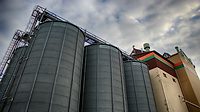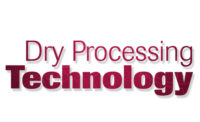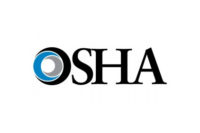TECH FLASH
Beyond OSHA combustible dust compliance
Feed mill employs portable combustible dust central vacuum to remove fugitive grain dust.

When Missy Morrison, plant manager at Star Milling says she wants to avoid employee injuries at all cost, she’s not regurgitating a safety slogan but stating a legitimate objective. Morrison and Maintenance Manager Keith Williams attend several safety seminars throughout the year and devote a significant amount of time staying abreast of OSHA news. “Many people don’t understand that grain milling is high risk,” says Williams. “It’s an extremely flammable industry.”
Located in Perris, CA, Star Milling was created to produce quality feed for the family egg farm. Now, the mill uses raw grains and other ingredients to produce feed for a wide variety of animals. In addition to producing its own Integrity, Kelley’s, Ace Hi and Ultra Balance feeds, the company provides private-label services and delivers its feed in bulk tankers to farms.
Producing tons of feed per day, the large facility includes an extruder, two pellet mills, a grain cleaner, roller mills for making rolled barley grains, a mixer for pigeon and wild bird feed, a fully automated bagging system with a robot that palletizes sacks and a small bagging line for small packaging flexibility. To stay ahead of the growth, new electrical and computer systems were installed to facilitate increased automation in the facility.
But, with increasing production, manual cleaning methods were becoming cumbersome.
Knowing combustible dust is one of OSHA’s increasingly hot topics, especially with feed mills, Williams and Morrison began researching alternatives to manual cleaning methods of sweeping and compressed air usage. “Compressed air is the biggest thing to get away from right now,” explains Williams. “It just blows the dust around into hard-to-reach areas.”
Although vacuum cleaners are the preferred method of removing fugitive combustible dust, the mill had previously used an agricultural vacuum, which Williams says was great on the farm but not for Star Milling.
The other alternative was a central vacuum system that would be expensive to set up, require more piping and multiply the areas where dust could settle. In such a big facility, a vacuum that could pull from one end to the other would require a large and expensive setup.
Both Williams and Morrison remembered reading an article about a VAC-U-MAX breakaway central vacuum system that meets OSHA’s requirements for a combustible dust vacuum. After researching other options, Morrison arranged a meeting with Air Cleaning Technology (ACT), the local representative for VAC-U-MAX.
During the initial meeting with ACT’s Sales Engineer Randy O’Halloran, the option of dust collection equipment was discussed. During the walkthrough, O’Halloran witnessed the problem areas the feed mill wanted to handle such as rafters, beams and pits, and suggested a vacuum cleaning application.
According to Williams, Star Milling chose the VAC-U-MAX 1020 system over those of competitors because of its superior suction.
The higher suction is a result of the positive displacement (PD) pump vacuum production. PD pumps are capable of generating high vacuum and excellent airflow so they can pull massive amounts of material over distances. The 15hp model at Star Milling moves 10,000 lb. of powder an hour from 30 ft. away, if needed.
Williams says, “I like the ability to do whatever I want with one vacuum. The VAC-U-MAX 1020 system is a dual-purpose machine that maximizes ROI. It is a cost-effective alternative to what could have been very expensive.”
Once the system was in place, Star Milling set up a training program to teach supervisors and operators how to use the machine. “It’s pretty much plug and play right away, but the suction is powerful, and we wanted to be sure everyone was using the vacuum safely,” says Williams.
Cleaning the upper area of the pellet mill was one of Morrison’s first projects. “Before we purchased the vacuum, we used to clean that area every three months, and it took one person all day to clean it,” she recalls. “With the vacuum, all the dust gets sucked into the vacuum system and doesn’t spread anywhere,” says Morrison.
One of the biggest benefits came with cleaning the elevator pits. “We use extension tubes with the vacuum, and they give us the ability to get into the confined space without anyone actually having to enter it, which is a big deal for us. Every time someone has to enter the confined space, you need to have a three-person team monitor the air,” says Morrison.
Before Morrison and Williams had a chance to set up a schedule to clean the pits, the operators in the area began using the system on their own. The unit is designed for one-person maneuverability with 14-in. diameter wheels, but Star Milling chooses to move the vacuum from area to area with a forklift.
For more information:
973-759-4600, info@vac-u-max.com; www.vac-u-max.com.
Looking for a reprint of this article?
From high-res PDFs to custom plaques, order your copy today!





